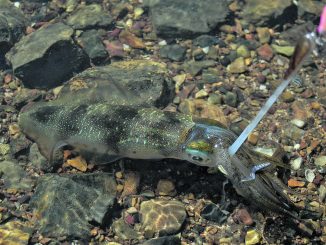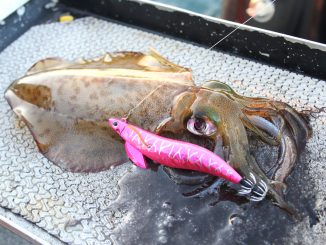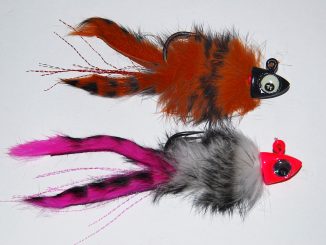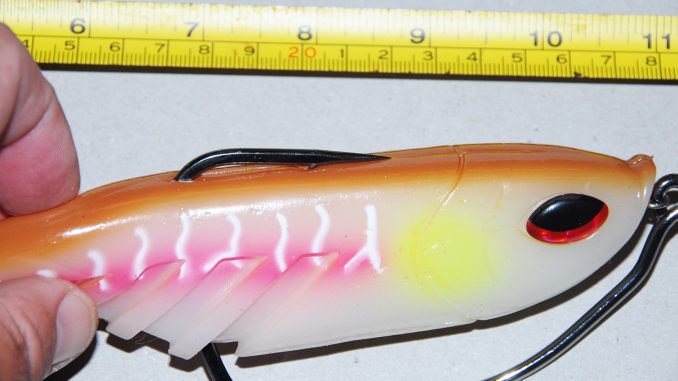
by Gordon Macdonald •
Over the last few years there has been a resurgence in the popularity of cod fishing. Images of large mottled green goodoo, many of them over the magical metre mark, have intrigued and inspired anglers to make the journey to target these Aussie natives.
Generally large lures are required to tempt large fish, and the interest in swimbaits has flourished in recent years with Murray cod, barramundi and mulloway being some of the main targets. Swimbaits can include multi-jointed hard and hard/soft fish imitations, single-jointed hard glide baits and numerous oversized rubber or silicone fish profiles that commonly sport large paddle-tails, which will thump away as the lure is retrieved. Many of these lures come completely rigged while others require rigging.
Numerous large shad-profiled soft plastic tails are now available on the market. These are shaped like a fish, sport a large paddle-tail and will swim enticingly when slowly retrieved or worked with bursts of speed and paused. Rigging many of these lures has previously posed a problem, with minimal large worm hooks or suitable jigheads available.
A few different brands of large worm hooks are starting to show up like the Nomad Tackle BKK Swimbait hook, which is available in sizes up to 20/0 to suit the largest plastics on the market. When a plastic shad is rigged with just these hooks it can become almost weedless (almost impossible to snag or foul) due to the way that the hook point sits flat against the lure’s back.
However, as the hook point is only around halfway along the lure’s length, many anglers like to add an additional stinger hook closer to the lure’s tail to maximise hook-up potential on short biting fish. Let’s look at a few ways to do this.
Step 1.
There are a few items you will need to rig a shad-profile lure like this Berkley Papa Giant 25cm in three different ways. If you only want to rig one way then you won’t need everything here. To do all three rigs you will need a sharp knife, some quality treble hooks, split rings, large swivels, assist cord (100-150lb), an 18/0 BKK Swimbait hook, a 4/0 assist hook and some lumo tube (a large lumo bead or some Bait Buttons will do).

Step 2.
This is the basic positioning of the BKK 18/0 Swimbait Hook in the Berkley Papa Giant. As the hook point is almost in the front third of the plastic, the addition of a flexible stinger hook will aid hooking potential without affecting the action.

Step 3.
This particular plastic has a belly recess slot, which makes it ideal for rigging with a worm hook. Many large shads don’t have this, so you’ll need to cut a slot approximately two thirds the way down the belly of the bait (or at least as long as the worm hook). This slot needs to be fairly deep and you will need to cut all the way through to within 1cm of the back. This will make the bait softer, which will increase action and will also allow the worm hook to push upwards when a fish crunches the shad, which will promote the hook point.

Step 4.
To initially put the worm hook in the shad, screw the wire spiral into the front nose of the bait. It should go all the way in until the hook eye is against the shad’s nose.

Step 5.
Work out where the rear of the hook needs to penetrate the back of the shad then distort the body so you can push the hook point through at this position. Once complete, the hook should look like this with the hook exiting centrally along the back and sitting flush against it.
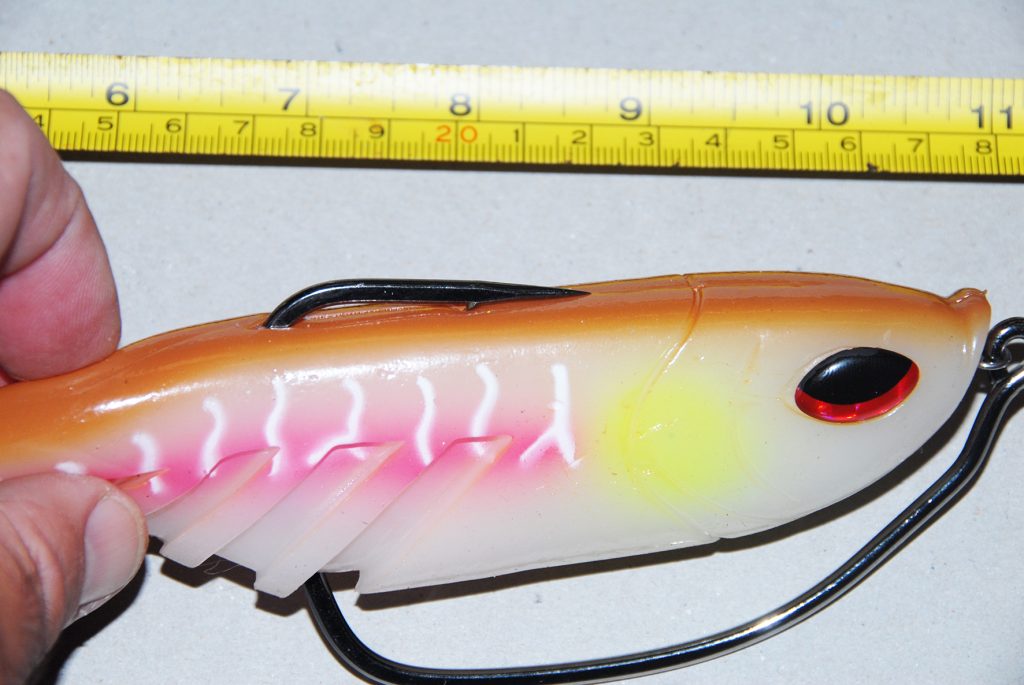
Step 6.
Connect the treble hook to the swivel with the split ring. Ensure the quality of each is up to the target species. The swivel’s eyelet will need to be large enough so that it can go over the barb of your chosen BKK Swimbait hook.
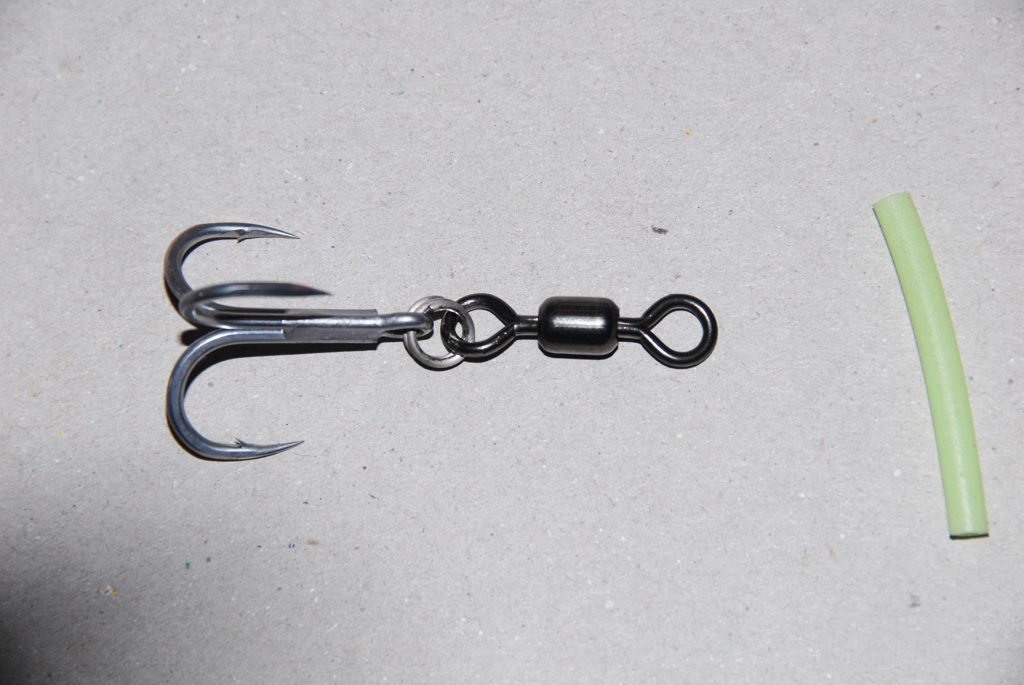
Step 7.
Pass the free end of the swivel over the hook point and barb and then lay the rig along the back of the shad’s back. Work out the point on the shad that coincides with the bend of one hook on the treble and pass the hook point into the shad at this position. This will keep the other two points of the treble proud. Ensure the shad is still flexible and the stinger treble positioning doesn’t affect its movement. Add a piece of lumo tube, a lumo bead or a Bait Button over the hook to prevent the swivel sliding off. This rig is now ready to fish.

Step 8.
There are numerous ways to attach a hook or treble to some assist cord. One of the easiest is the simple snell. To do this, firstly pass the end of the assist cord through the eye of the hook. While holding this tag end against the shank, pass the cord back behind the eye and begin wrapping it around the hook shank.
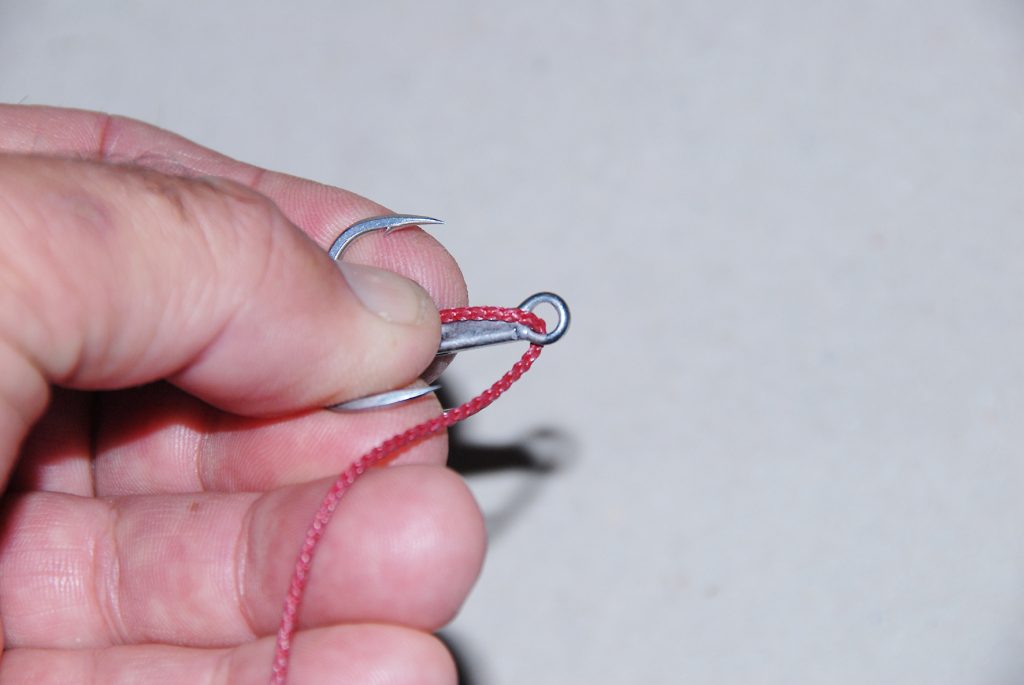
Step 9.
Wrap down around the shank four or five times and then pass the long end of the assist cord back through the eye and pull tight.
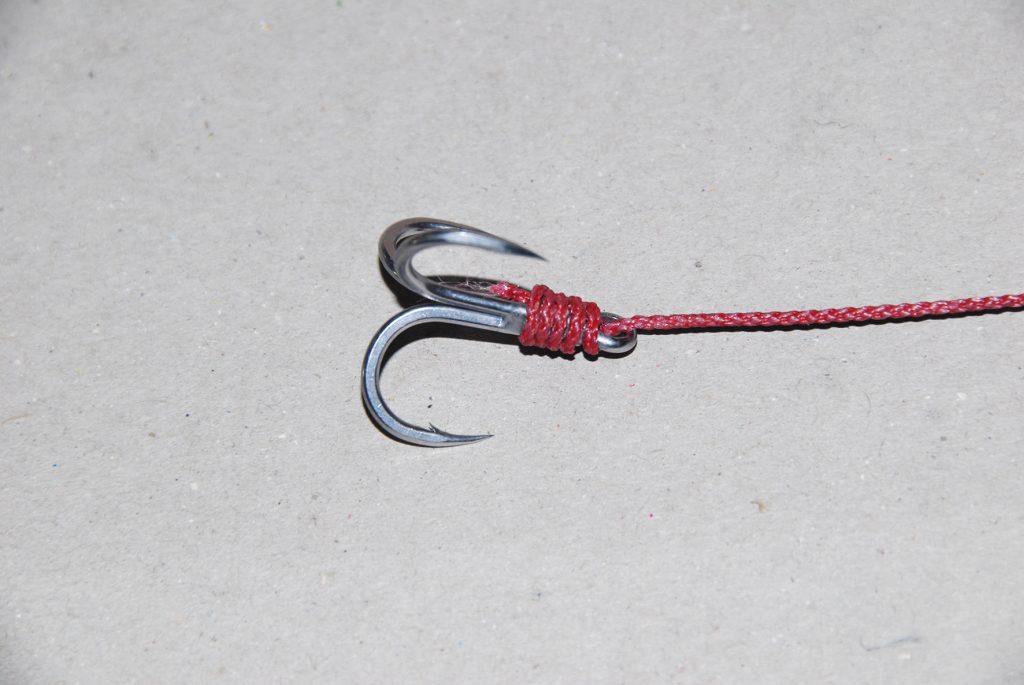
Step 10.
Attach the assist cord to the shank of the BKK Swimbait hook with a double clove-hitch or sliding uni knot. The benefit of this rig over the previous one is that you can make it any length you want, depending on the size of your shad. This rig is now ready to fish.

Step 11.
The third way to rig a large shad is with a single hook. This can either protrude from above or below the tail. You can use assist cord to attach the hook using the same method that we used for the treble or use a premade assist rig like this Vanfook Spear 4/0. You need to insert the cord through the plastic, so you’ll need a needle like this one, which can be made from a large bait stitching needle with a piece cut out of the lower section of the eye loop. Place your rig alongside your shad to work out where the needle needs to pass.
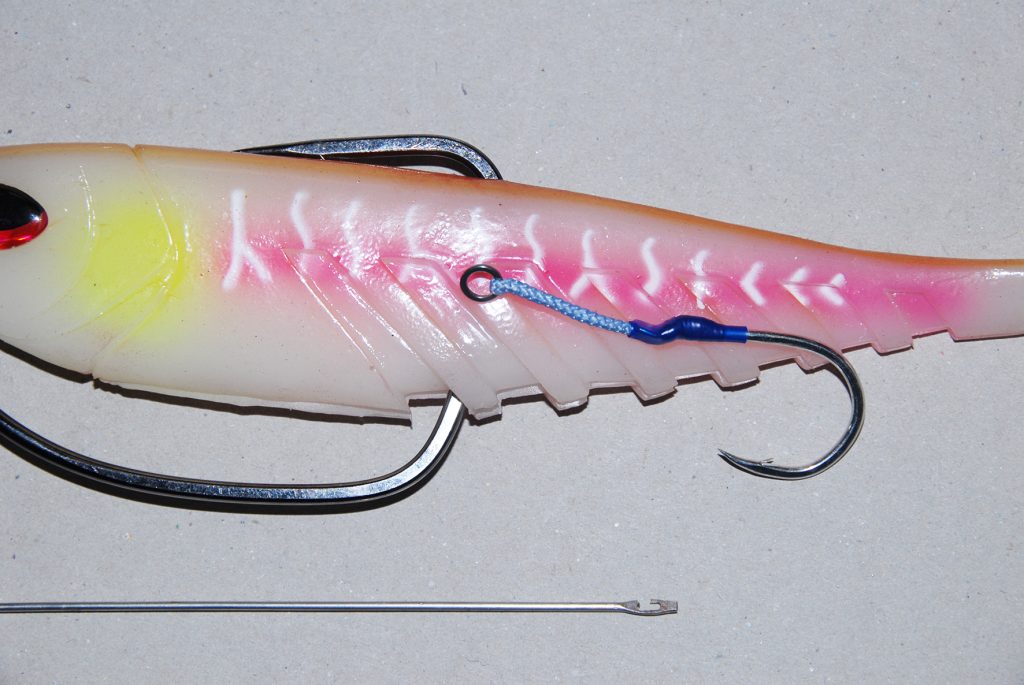
Step 12.
Push the needle through the plastic from the rear and exit it out the gut cavity or slot that you cut with your blade. Loop the solid ring of your assist rig onto the eyelet of the needle in preparation to pull it through the plastic.
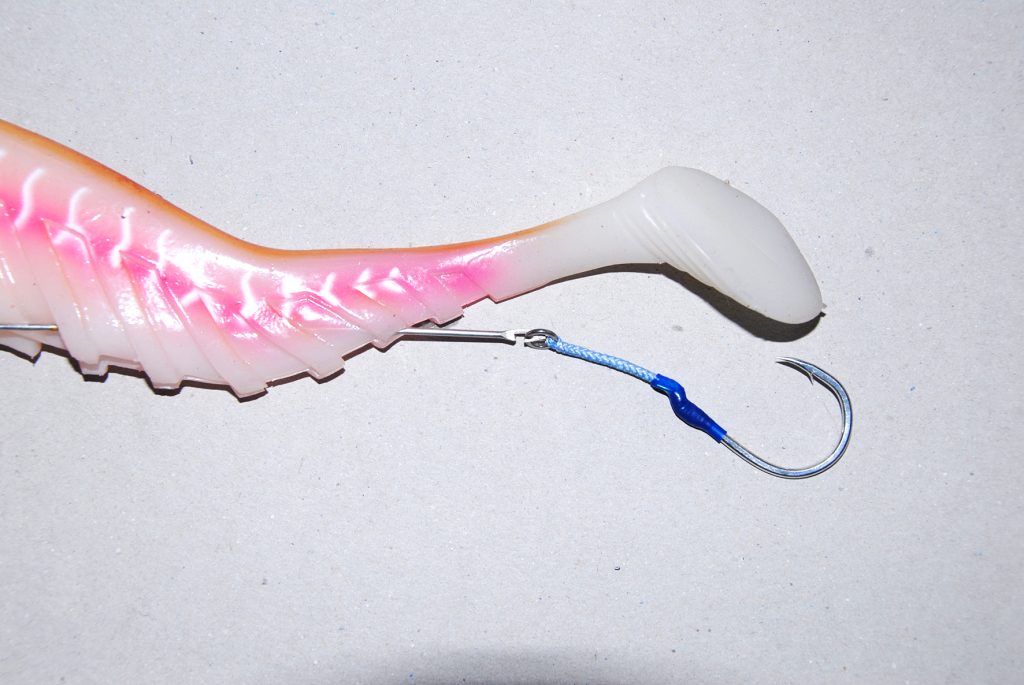
Step 13.
Pull the needle through, dragging the assist rig with it until the solid ring is all the way through into the gut cavity. You may need to distort the ring slightly into an oval so that it will pass over the barb of the hook.
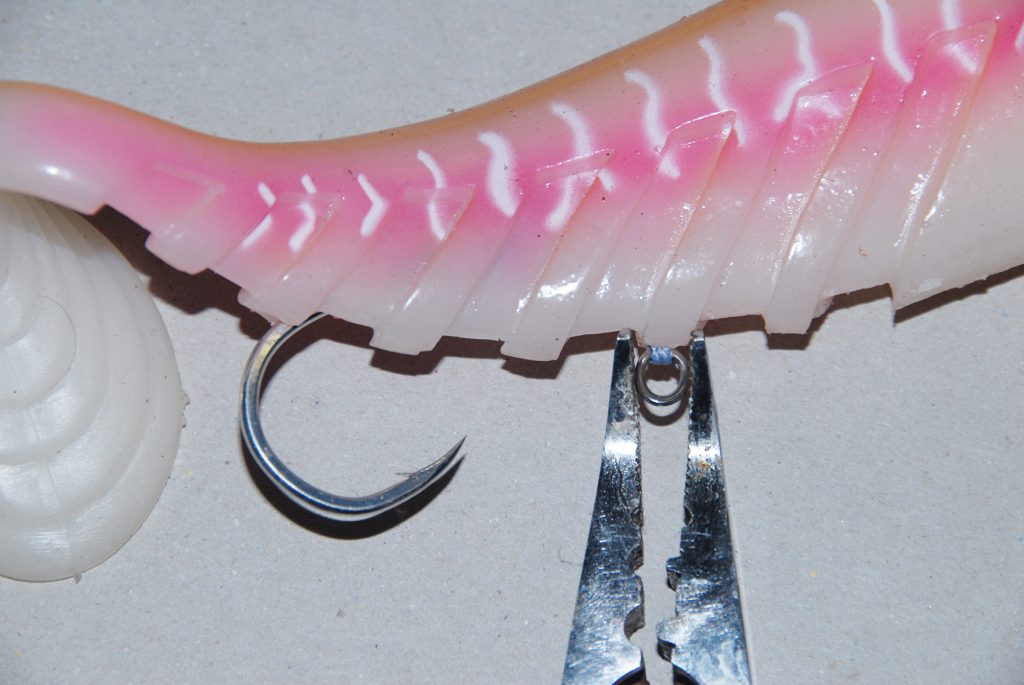
Step 14.
Put the solid ring onto the hook and then insert the hook point up through the back of the plastic, as you did in Step 5. This rig is now complete and ready to fish. With the single stinger hook in this position, it offers more snag resistance than the previous two treble hook rigs.
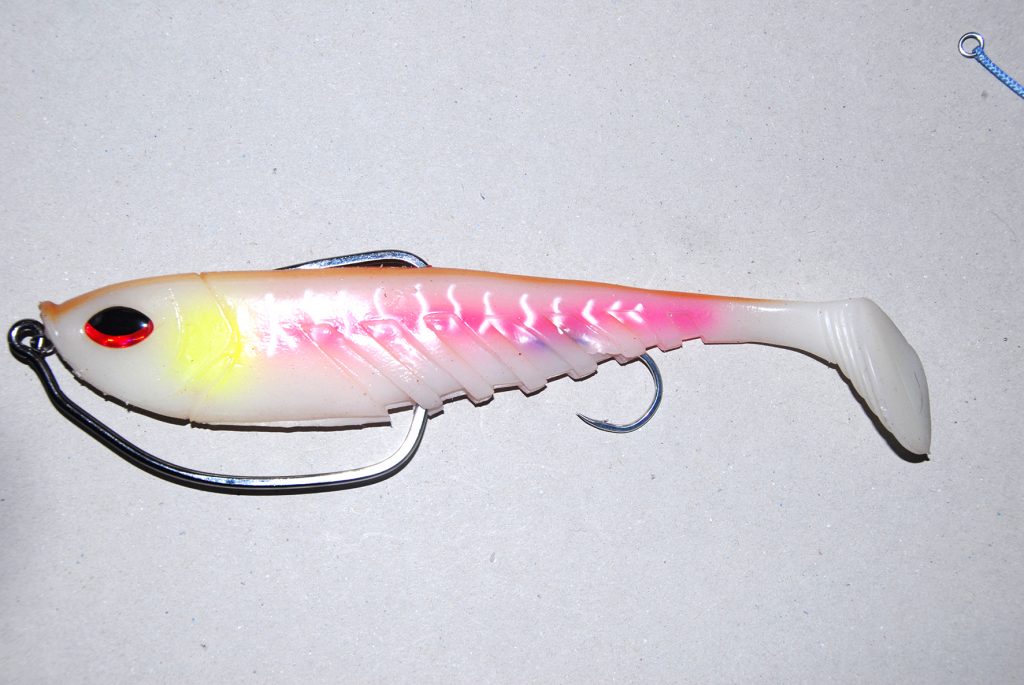
Step 15.
Obviously you can still rig a single stinger hook out the top of the plastic. The practice is exactly the same as when rigging it from below, except your needle will travel on a different path. All these rigs offer increased hooking potential when using XOS shad style plastics without affecting the action. More weight can be added to this rig by putting lead on the shank of the BKK Swimbait hook or a small ball sinker on the leader loop knot used to attach it to the hook eye.


